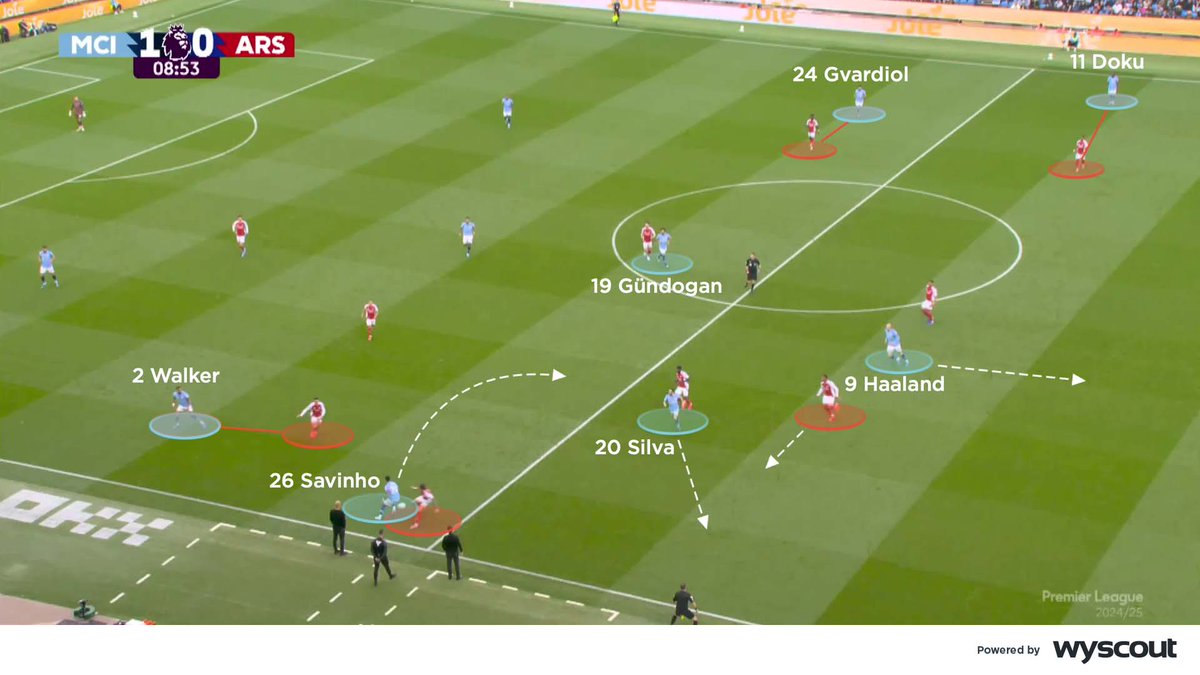A THREAD! 👇 Liverpool beat Arsenal on Monday to maintain their 100% start to the Premier League season. Our coaches reveal the tactics used by both sides from the fixture 🔴 #LIVARS
🔴 Liverpool used a 4-3-3 in possession, featuring Fabinho, Georginio Wijnaldum and Naby Keïta in midfield and Mo Salah, Roberto Firmino and Sadio Mané in attack (1/8)
#LFC #LIVARS
#LFC #LIVARS

🔴 They also used their usual 4-3-3, and a back four of Trent Alexander-Arnold, Joe Gomez, Virgil van Dijk and Andy Robertson, when without possession (2/8)
#LFC #LIVARS
#LFC #LIVARS

🔴 They implemented an aggressive press, with Salah and Mané closing down Arsenal’s defenders from the outside, and Firmino and Keïta picking up their deep midfielders (3/8)
#LFC #LIVARS
#LFC #LIVARS

🔴 Liverpool played through Arsenal towards the left, with Robertson taking up an advanced position as Mané and Firmino dropped and rotated (4/8)
#LFC #LIVARS
#LFC #LIVARS

🔴 Arsenal set up in a 3-4-3 structure with the ball; Hector Bellerín, Granit Xhaka, Mohamed Elneny and Ainsley Maitland-Niles played across midfield (5/8)
#Arsenal #LIVARS
#Arsenal #LIVARS

🔴 When out of possession they mostly used a 5-4-1; Maitland-Niles and Bellerín tucked in to form their five-man defensive line, and Pierre Emerick-Aubameyang and Willian dropped into midfield (6/8)
#Arsenal #LIVARS
#Arsenal #LIVARS

🔴 Arsenal had a co-ordinated approach in defence; Aubameyang, Lacazette and Xhaka shared responsibility for pressing Liverpool’s defenders, picking up Fabinho, and occupying Keïta (7/8)
#Arsenal #LIVARS
#Arsenal #LIVARS

🔴 Arsenal also tried to exploit the space behind Liverpool’s high defensive line with direct balls from deep positions, and had mixed success (8/8)
#Arsenal #LIVARS
#Arsenal #LIVARS

• • •
Missing some Tweet in this thread? You can try to
force a refresh
















